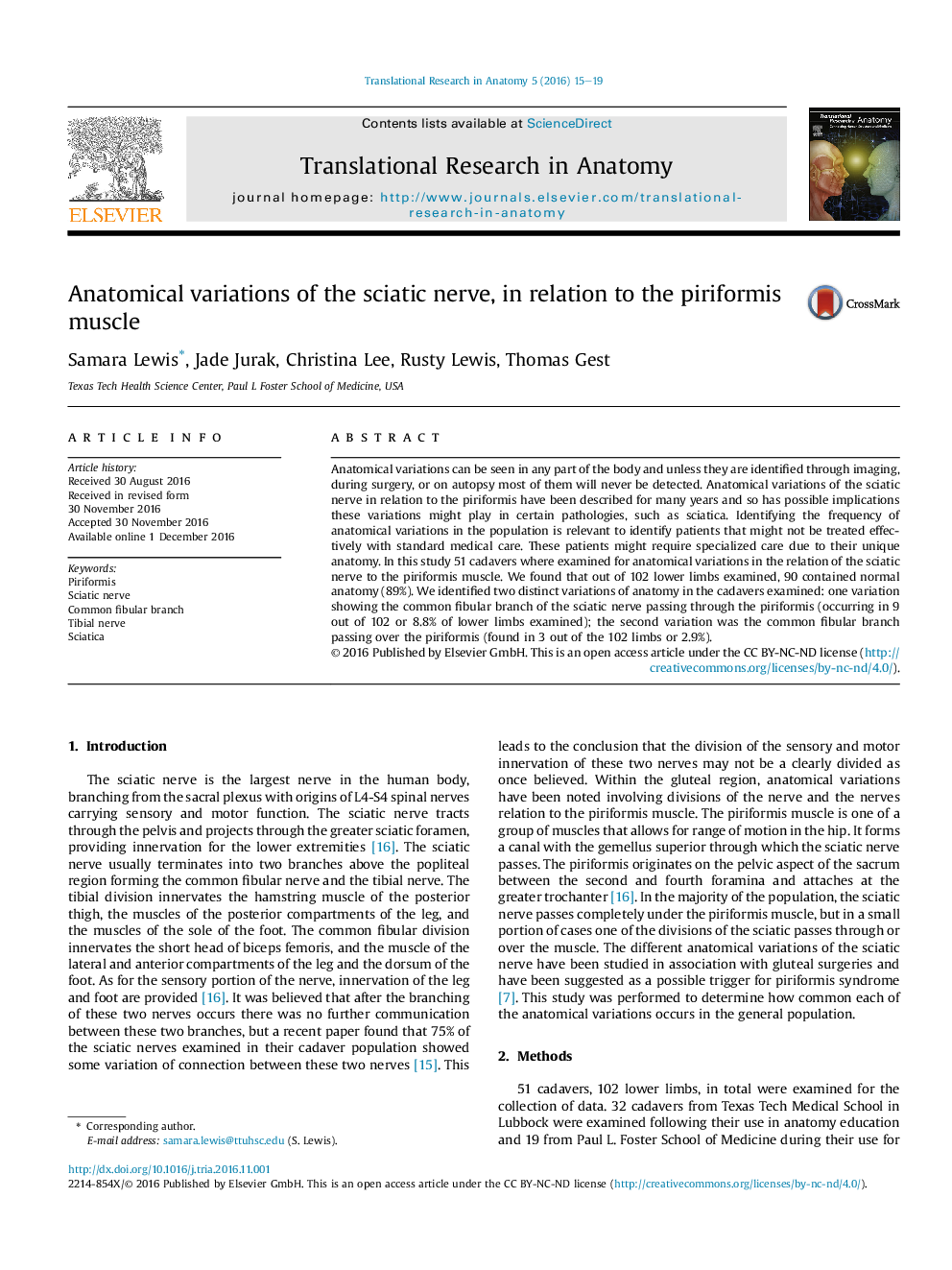| Article ID | Journal | Published Year | Pages | File Type |
|---|---|---|---|---|
| 6090665 | Translational Research in Anatomy | 2016 | 5 Pages |
Anatomical variations can be seen in any part of the body and unless they are identified through imaging, during surgery, or on autopsy most of them will never be detected. Anatomical variations of the sciatic nerve in relation to the piriformis have been described for many years and so has possible implications these variations might play in certain pathologies, such as sciatica. Identifying the frequency of anatomical variations in the population is relevant to identify patients that might not be treated effectively with standard medical care. These patients might require specialized care due to their unique anatomy. In this study 51 cadavers where examined for anatomical variations in the relation of the sciatic nerve to the piriformis muscle. We found that out of 102 lower limbs examined, 90 contained normal anatomy (89%). We identified two distinct variations of anatomy in the cadavers examined: one variation showing the common fibular branch of the sciatic nerve passing through the piriformis (occurring in 9 out of 102 or 8.8% of lower limbs examined); the second variation was the common fibular branch passing over the piriformis (found in 3 out of the 102 limbs or 2.9%).
